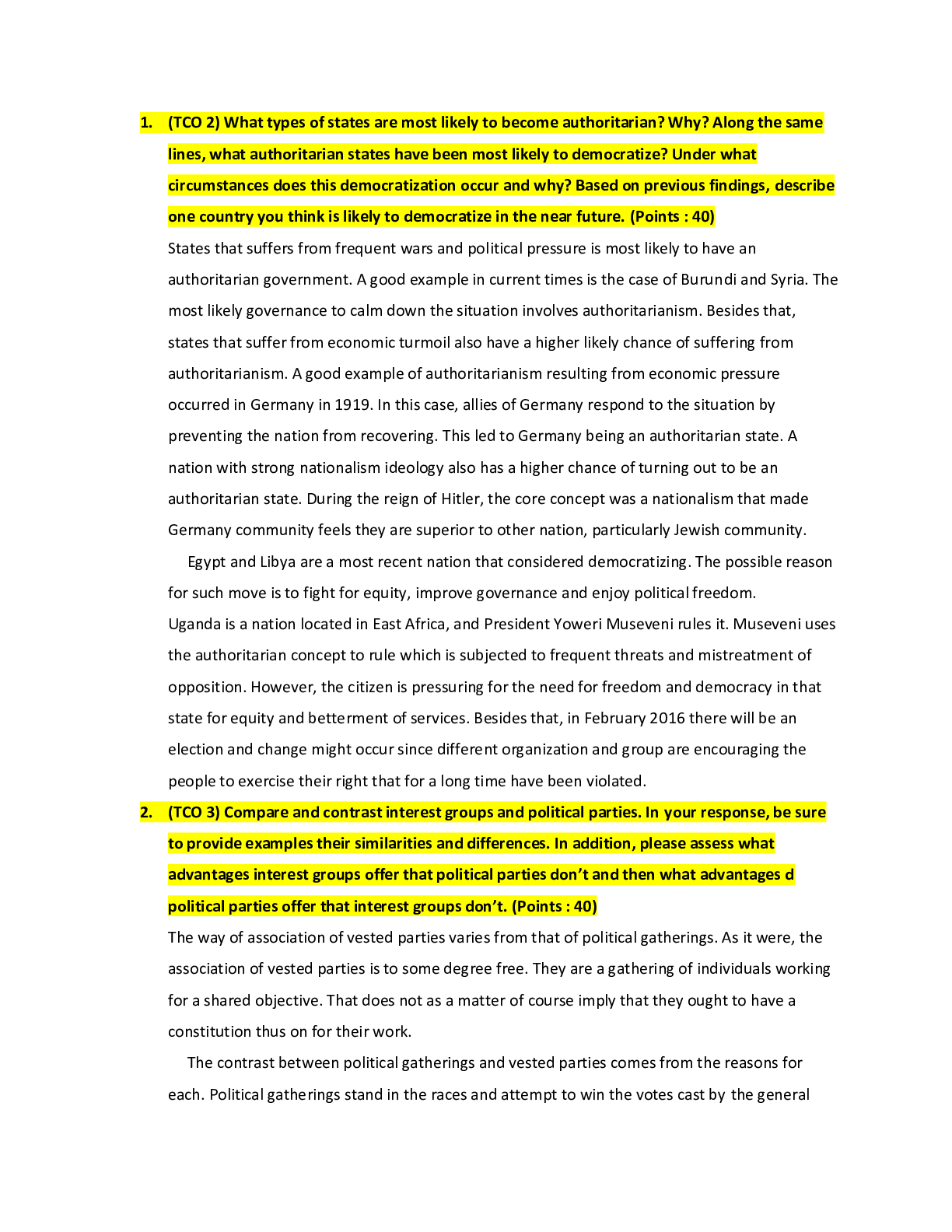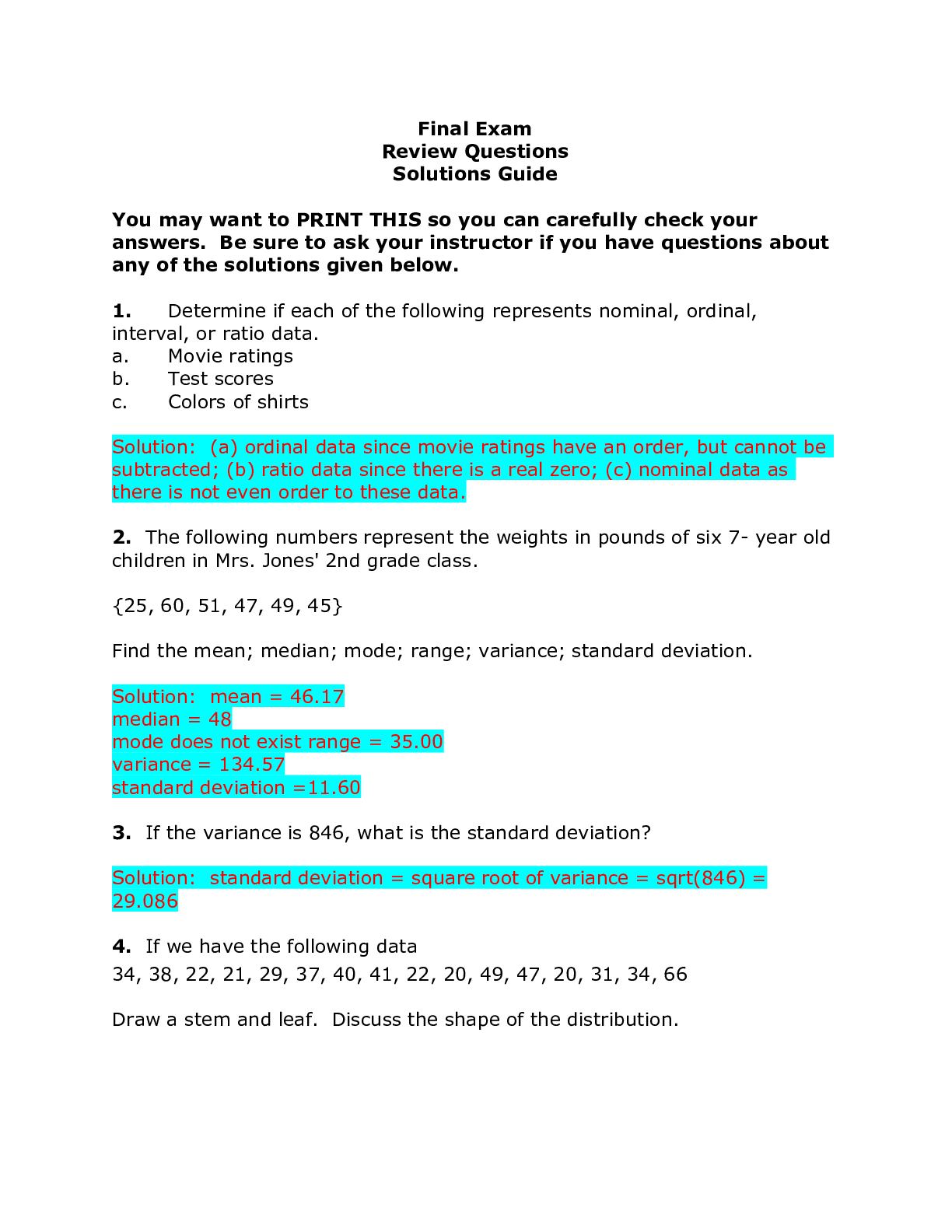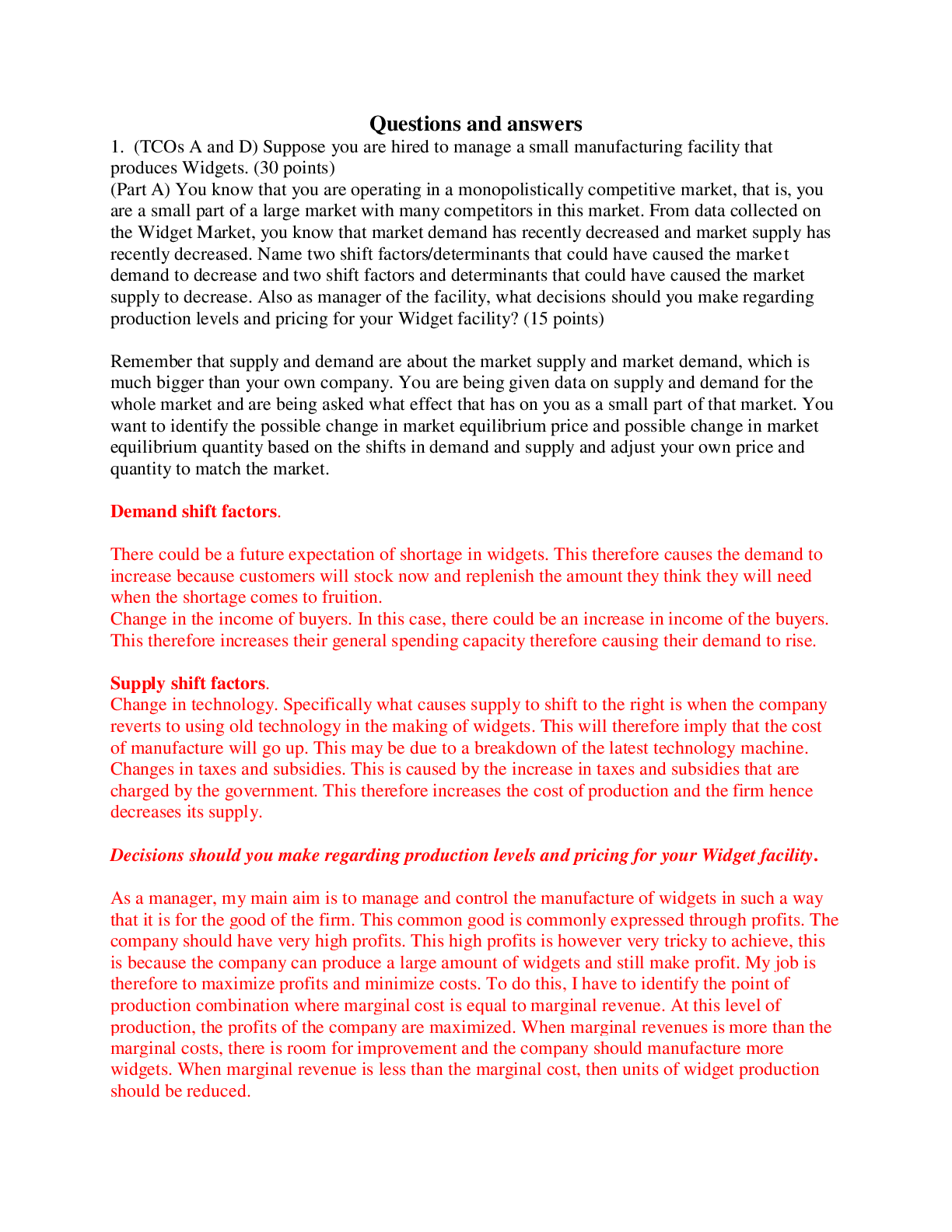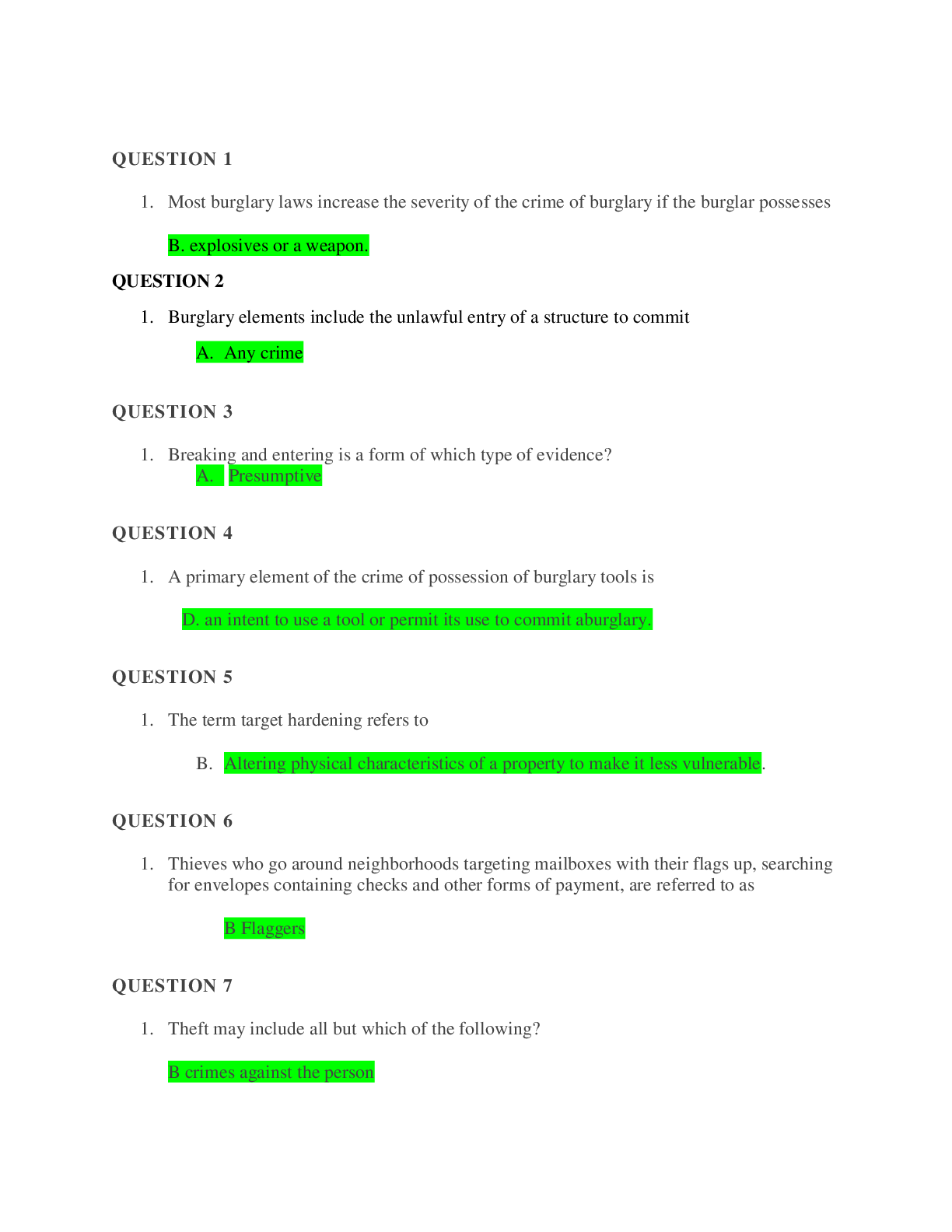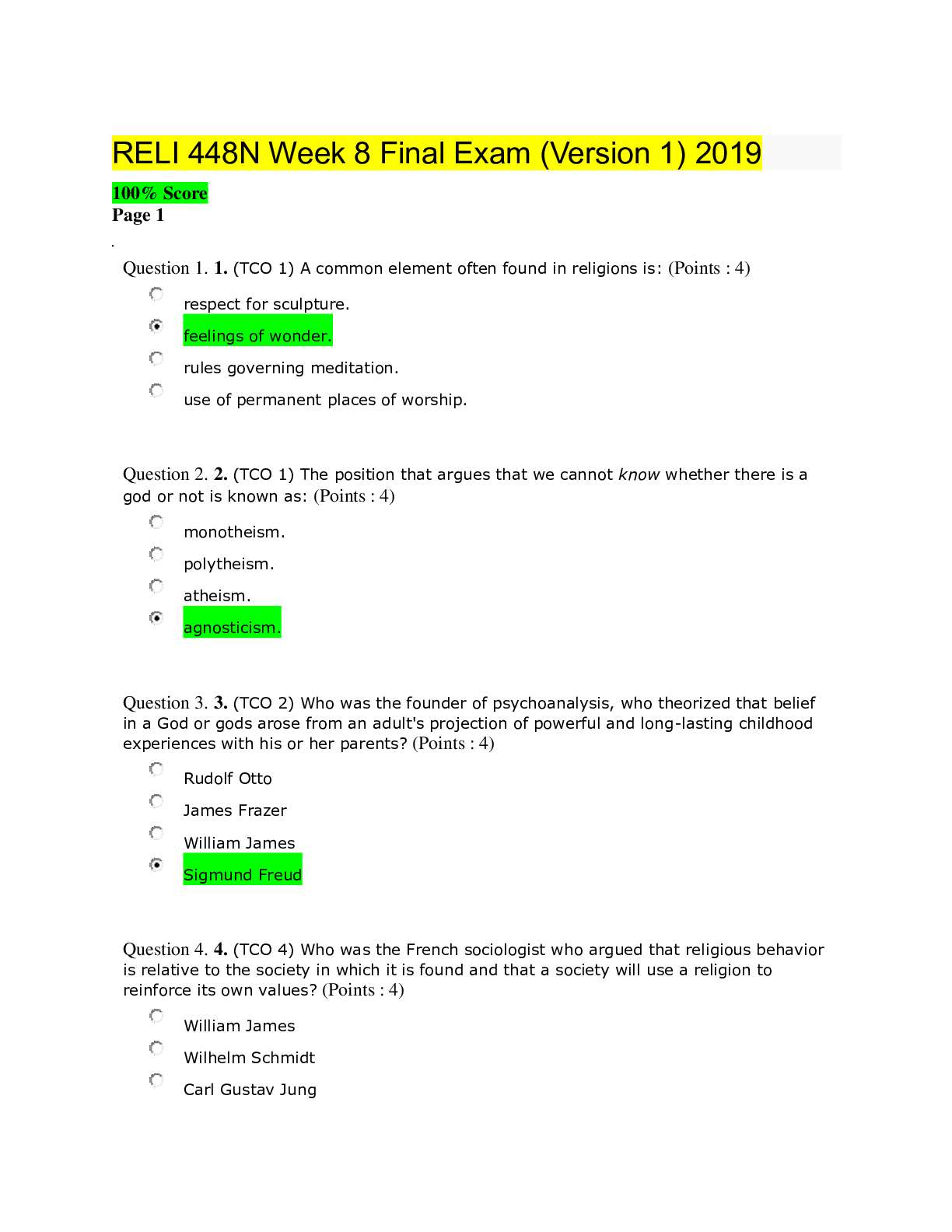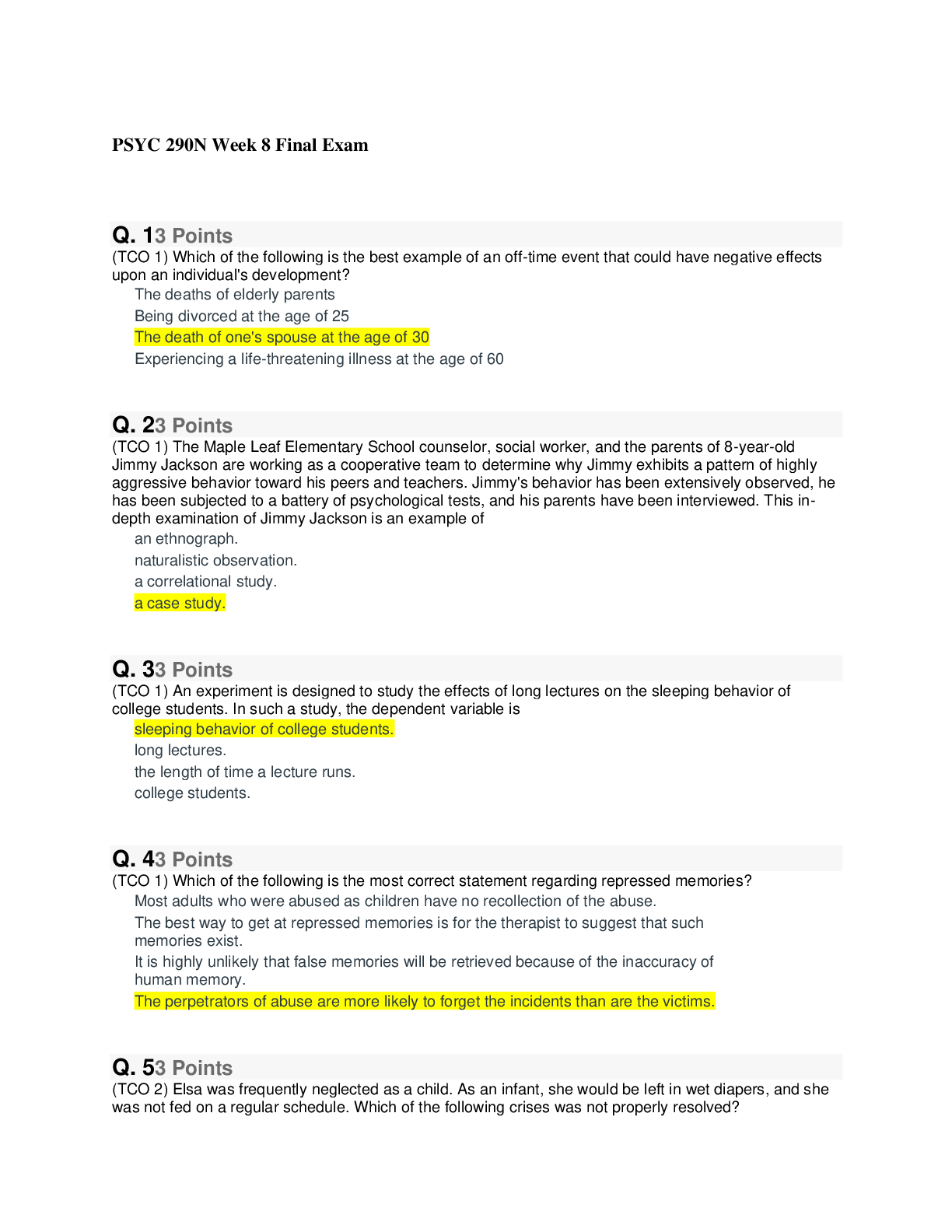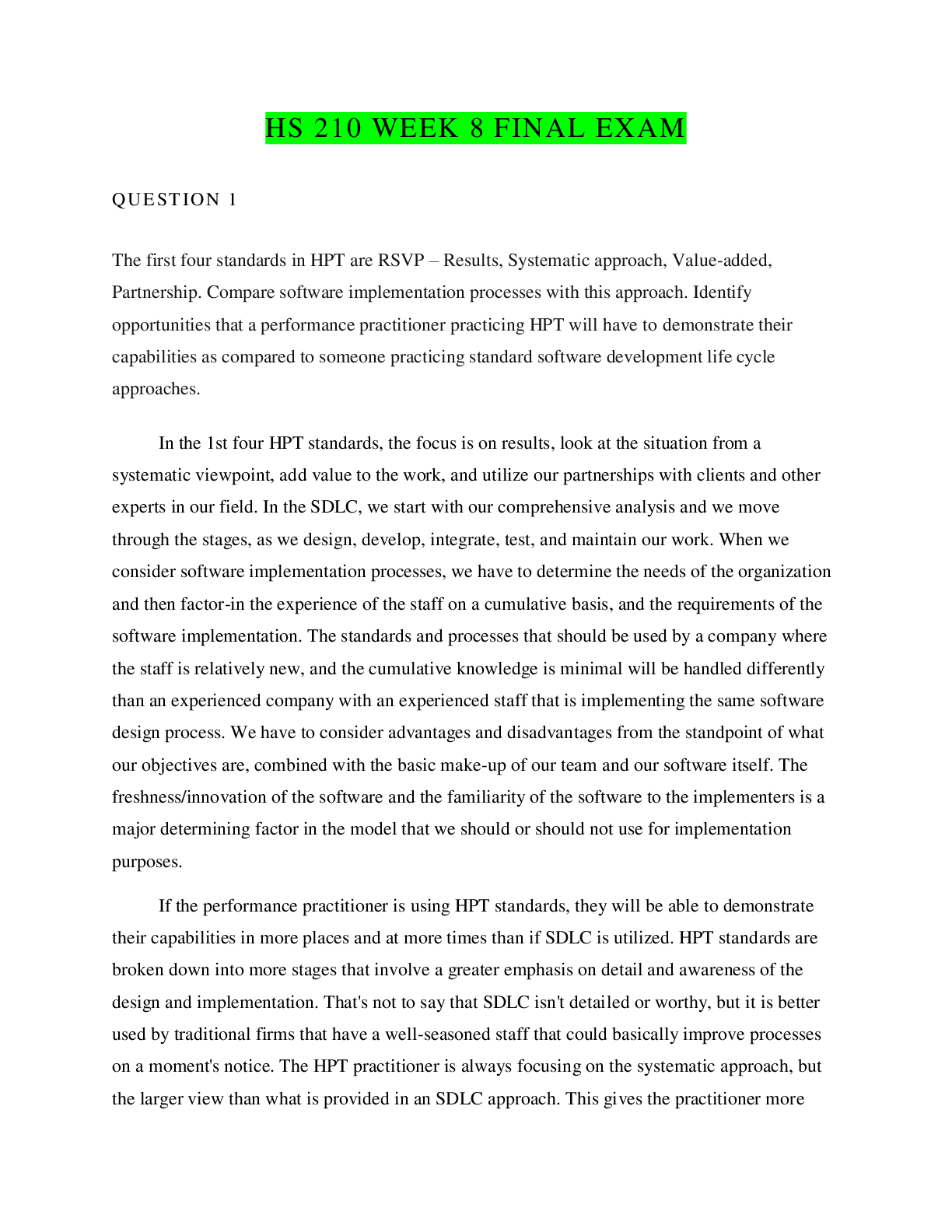BIOS 252 Week 8 Final Exam Review Questions and Answers 2022
Document Content and Description Below
Anatomy & physiology 1 Review for Final lecture exam Anatomical terminology and general principles of physiology 1. What are the planes of section that divide body into: left and right; front and b... ack; up and down? • Sagittal- left and right • Frontal- front and back • Transverse- up and down 2. What do the following pairs of positional terms mean: proximal and distal, medial and lateral, dorsal and ventral,superior and inferior, contralateral and ipsilateral, superficial and deep? • Proximal and distal- closer/further away from the trunk (for limbs only) • Medial and lateral- towards/away the middle line • Dorsal and ventral- towards the backside/belly • Superior and inferior- higher/lower • Contralateral and ipsilateral- opposite/same side • Superficial and deep- in relation to the surface of the body 3. Explain the termsthat describe locations/parts of the body: cervical, cranial, brachial, antebrachial, femoral, cutaneous/subcutaneous, sacral, gluteal, thoracic, dorsal • Cervical- neck • Cranial-skull • Brachial- arm • Antebrachial- forearm • Femoral- thigh • Cutaneous/subcutaneous- • Sacral- lower back • Gluteal- buttock • Thoracic- chest • Dorsal- back 4. What are the properties of the “anatomical position”? • Body is standing erect • Facing the observer • Head level, eyesforward • Feet flat on floor, directed inward • Arms at sides, palms turned forward 5. Describe negative feedback loop components and explain what it does. • Main regulatory mechanism in the body • Reverse the change to its set point • Example: body temperature, BP, water content, body weight, etc. 6. Define homeostasis. Maintenance ofstable conditions within the body. 7. List common medical imaging techniques and briefly describe how each one works. • Visual- external and internal • X-ray- • CT-scan- uses x-ray and computer to generate 3D images • MRI- uses magnetic field, best forsoft tissue, to study physiology such as brain activity • Radionuclide scanning- inject radioisotopes for cancer • Ultrasound-soundwaves, not harmful, low resolution Chemistry, biochemistry and cell biology 8. Explain why the formation of a chemical bond (giving away an electron, picking up an electron or sharing electrons) makes an atom more stable. Most atoms have a relatively high potential energy which are less stable when by themselves than when they are bonded with other atoms. 9. What chemical characteristics do acids and bases have (what does each release in solution)? Acids • Release a H ion into aqueous solutions • Neutralize basesin a neutralization reaction • Corrode active metals • Turn blue litmus to red • Taste really sour • Conduct electricity very well • Can dissolve complex HCo Bases • Release a hydroxide ion into watersolution • Neutralize acidsin a neutralization reaction • Turns red litmus to blue • Conduct electricity very well • Taste bitter • Dissolve fats and fatty substances • Can’t dissolve metals 10. What is produced during hydrolysis of a: fat (triglyceride), protein, starch? Fat (triglyceride) • can be hydrolyzed to produce glycerol and 3 fatty acidsin the presence of acid and heat or with a suitable lipase enzyme under biological conditions. Protein • hydrolyzed to amino acidsin the stomach and gut with enzymes called…proteases. Proteins are made of amino acids. So, when the proteins are hydrolyzed, amino acids are produced. Starch • molecules undergo hydrolysis, it forms either monosaccharides, disaccharides or trisaccharide. The end products depend on the strength of enzymes used and the common enzymes 11. List the types of monomersthat are used to make: proteins, carbohydrates, nucleic acids. Carbohydrates • Monosaccharides Proteins • Amino acids Nucleic acids • Nucleotides 12. What are the names of bonds between monomers in the above polymers? Hydrogen bonds 13. Define “hydrophobic” and “hydrophilic” chemicals and give an example of each. Hydrophobic “water-hating”- non-polarsubstances that are not water soluble • oil Hydrophilic “water-loving”- polarsubstancesthat dissolve easily in water • sugar 14. What are “hypertonic”, “isotonic” and “hypotonic” solutions? Which one do human cells prefer to be in and why? What is osmosis? What is “crenation”? Human cells prefer isotonic Hypertonic • High osmotic pressure than the fluid around it • Cell shrinks Isotonic • Same osmotic pressure inside as the fluid around it • Cellsta........................................................................................continued [Show More]
Last updated: 2 years ago
Preview 1 out of 27 pages

Buy this document to get the full access instantly
Instant Download Access after purchase
Buy NowInstant download
We Accept:

Reviews( 0 )
$18.00
Can't find what you want? Try our AI powered Search
Document information
Connected school, study & course
About the document
Uploaded On
Apr 07, 2022
Number of pages
27
Written in
Additional information
This document has been written for:
Uploaded
Apr 07, 2022
Downloads
0
Views
79













